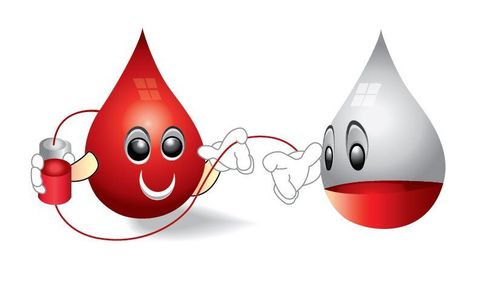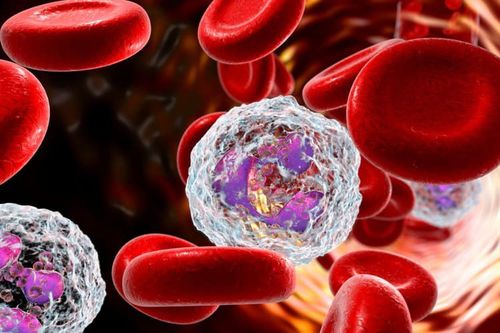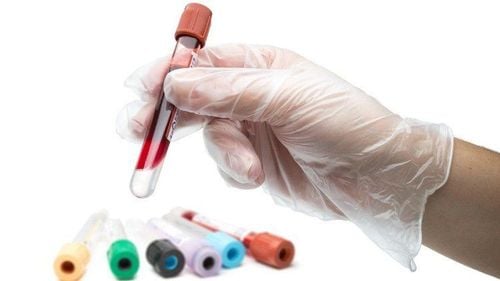This is an automatically translated article.
The article was professionally consulted by MSc Do Thi Hoang Ha - Doctor of Biochemistry, Laboratory Department - Vinmec Hai Phong International General HospitalHematuria is an abnormality in the urinary system when red blood cells pass into the urine. Hematuria can be detected when the urine turns red or the hematuria test is positive. Patients with erythrocytosis need to be thoroughly investigated to detect the cause and promptly treat.
1. What is erythrocytosis?
Hematuria is the term used to describe the presence of red blood cells in the urine. Red blood cells are one of three types of blood cells, responsible for transporting oxygen to cells in the body as well as transporting CO2 from tissues back to the lungs for elimination from the body. The presence of red blood cells in the urine is an abnormal condition that manifests in many different diseases, the most common being a urinary tract infection.When the red blood cell count is elevated, the urine may turn an observable red, also known as gross hematuria. In contrast, when the red blood cell count in the urine is low, the urine remains the same color as it is known as microscopic hematuria. A positive red blood cell test is the most definitive method of diagnosing the presence of red blood cells in the urine, rather than simply observing the urine with the naked eye.
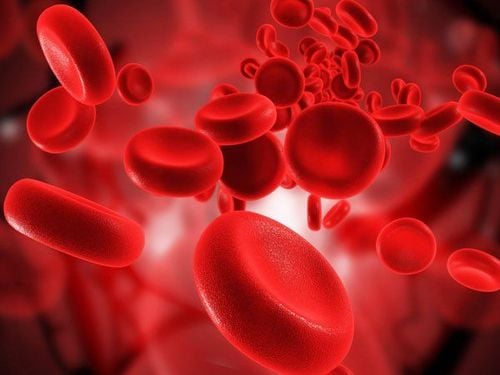
2. Causes of erythrocytosis
Urine contains red blood cells caused by many different causes, including:Urinary tract infections: Acute infections of the kidneys, ureters, bladder or urethra can all cause irritation of the lining. endothelial cells lining the urinary tract cause erythrocytosis. In men, prostatitis, an infection of the foreskin, can also be a cause of erythrocytosis. Sex: During rough sex, the surrounding urinary system tissue is more likely to be damaged, causing bleeding, causing the urine to contain red blood cells. Strenuous exercise and sports: Physical activities performed at high intensity such as athletes are also one of the causes leading to erythrocytosis. However, this abnormality usually does not last long and is likely to heal on its own with rest. Women in menstrual period Trauma to the external urinary tract can also cause damage resulting in the appearance of red blood cells in the urine. These are acute causes of the appearance of red blood cells in the urine, and usually disappear after a certain time. There are also other causes of chronic erythrocytosis in the body such as:
Urinary system stones: The presence of stones in any position in the urinary system can cause damage. and rub the surrounding epithelial cells. It is this that leads to clinical hematuria and positive hematuria. Polycystic kidney disease: This is a developmental disorder of the kidney, the normal renal parenchyma is replaced by cystic tissues. They have the potential to rupture and cause haemorrhage into the urinary tract and lead to a positive erythrocytosis test. Urinary tract malignancy: Kidney or bladder cancer is one of the leading causes of gross hematuria. The patient came to the medical facility with the reason of hematuria and the positive red blood cell test. Blood diseases: Abnormalities in hemostatic coagulation reactions such as hemophilia, hemophilia, sickle cell disease causing irregular red blood cell shape are conditions that make patients prone to bleeding. bleeding or bleeding. Hematuria present in this setting is characterized by prolonged and repeated recurrence. Medications: Certain medications have been shown to cause erythrocytosis, such as aspirin and some antibiotics. Patients should note medications taken in the last 1 to 2 months to provide clues as to the cause of the erythrocytosis. In summary, erythrocytosis is a symptom of many different clinical conditions, including malignancies such as kidney cancer and bladder cancer. Patients with a positive hematuria may be the result of one or more of the conditions listed above.
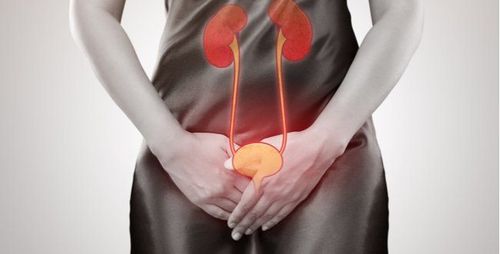
3. What should I do if I have a positive urine red blood cell test?
As soon as a positive erythrocytosis test is established, the doctor will exploit and perform a physical examination to detect many other symptoms that guide the cause of the disease. Additional tests may be indicated, depending on the specific context. Urinalysis (usually consisting of 10 parameters) to detect leukocytes, urinary nitrite, foreign cells in the urine, urinalysis, and urine culture for pathogenic bacteria are common tests. variable.Diagnostic imaging facilities are also performed to diagnose the cause of the disease or rule out acute pathologies such as:
X-ray of the urinary system Computerized tomography of the abdomen Cystoscopy Cystography Contrast-enhanced urinary tract Biopsy of tissue samples for pathology. Usually, hematuria is a common sign of a urinary tract infection. Once the cause has been identified, the main method of treatment is medical therapy with specific antibiotics. The choice of antibiotic should be made based on the results of the antibiogram obtained from the urine culture test. The duration of drug use for mild and moderate infections is about 1 week. If the disease is more advanced, it is necessary to prolong the drug longer and use it intravenously. Urinary tract infection is a disease with a high recurrence rate, especially in patients with urolithiasis, urolithiasis, or urinary tract malformation. Patients should be monitored and urine cultured again before deciding to end the course of treatment. The causes and factors that cause infection also need to be thoroughly addressed.
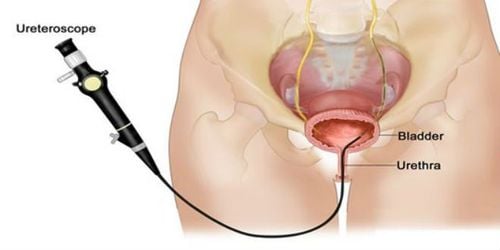
Urine test to detect urinary diseases is a routine test in the examination process at Vinmec International General Hospital. The testing technique at Vinmec is carried out methodically and in accordance with the standard procedures by a team of highly qualified medical professionals, modern machinery system, and quick result return time, thus giving accurate results. , contribute significantly to the identification of the disease and the stage of the disease.
Please dial HOTLINE for more information or register for an appointment HERE. Download MyVinmec app to make appointments faster and to manage your bookings easily.








